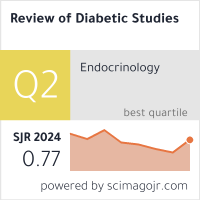Dimethyl Itaconate As A Novel Anti-Inflammatory Agent Targeting Tnf-Α-Driven Nf-Κb Activation In Epithelial Cell Models
DOI:
https://doi.org/10.1900/q356v768Keywords:
Dimethyl itaconate (DI), TNF-α, NF-κB signaling, human epithelial cells, IκBζ, ATF3, KEAP1-Nrf2, inflammasome, IRG1, glycolysis inhibition, anti-inflammatory mechanisms, itaconate derivatives.Abstract
Inflammation has a significant role in the pathogenesis of several epithelial diseases, leading to persistent inflammatory responses via the activation of the NF-κB signaling cascade, which TNF-α initiates. Dimethyl itaconate (DI), a cell-permeable derivative of itaconate, has recently been identified as an immunomodulatory agent that exhibits anti-inflammatory effects in human epithelial cells, as well as in other types of cells. In addition to delving into the creation of itaconate via IRG1, this article provides a comprehensive analysis of the function that endogenous and exogenous forms of itaconate, such as DI, play in the regulation of inflammation. We examine the metabolic pathways of itaconate and its derivatives, such as DI and 4-octyl itaconate (4-OI), to get a better understanding of the process of cellular absorption and reactivity of itaconate and its derivatives. In particular, we focus on the control of itaconate via IRG1. The major emphasis of our investigation is on the molecular pathways that are responsible for the impact of DI on the NF-κB signalling that is produced by TNF-α, particularly in epithelial cells. The process by which DI mediates transcriptional regulation involves the overexpression of ATF3, which in turn leads to a decrease in IκBν and a reduction in the generation of IL-6. In addition to this, DI is responsible for controlling important inflammatory genes and pathways, including JAK1-STAT6, TET2, and enzymes associated with glycolysis. Furthermore, it is responsible for stimulating the Nrf2 pathway by altering KEAP1. Moreover, it decreases the activity of inflammasomes. DI also helps reduce reactive oxygen species (ROS) in mitochondria and maintains antioxidant responses by inhibiting succinate dehydrogenase (SDH), a mechanism it employs to achieve this. Additionally, the research compares dimethyl itaconate to other itaconate derivatives and highlights the superior pharmacological properties of dimethyl itaconate. This is done in addition to addressing the therapeutic potential of dimethyl itaconate in the treatment of epithelial inflammation and related illnesses. Through the incorporation of information about metabolic regulation, transcriptional control, and immunological modulation, this work brings to light the potential of DI as a therapy for epithelial inflammation that is produced by TNF-α.
Downloads
Published
Issue
Section
License

This work is licensed under a Creative Commons Attribution-ShareAlike 4.0 International License.


